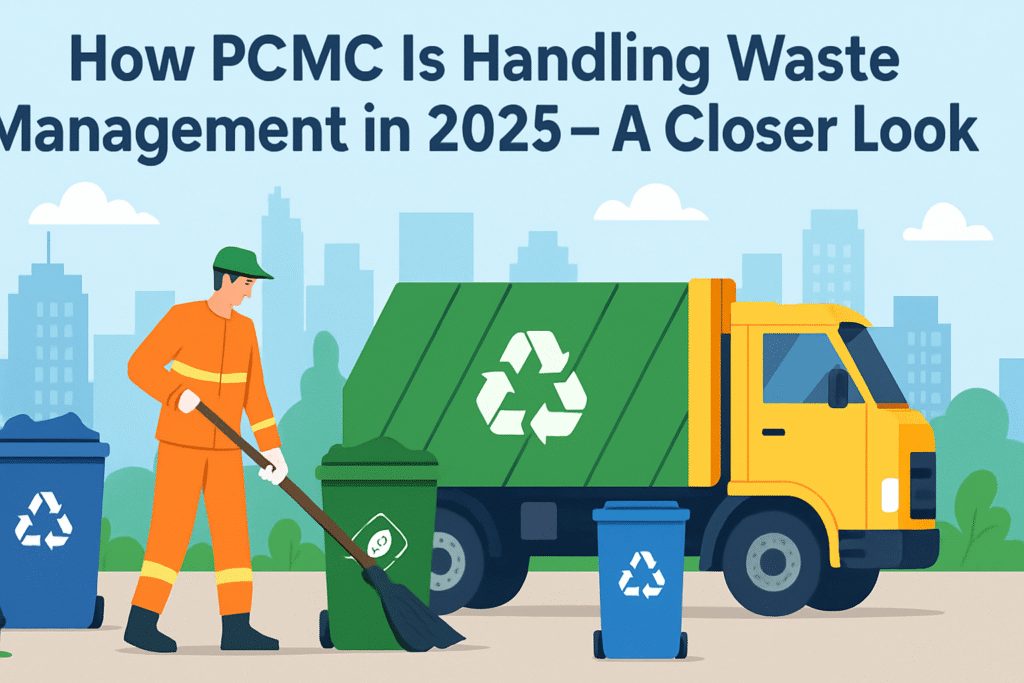The Pimpri-Chinchwad Municipal Corporation (PCMC) has been showcasing its “green city” image through plantation drives, clean-up campaigns, and smart city projects. However, the latest Environment Status Report (ESR) tells a different story — one where air quality and river health are still major concerns in 2025.
Despite several initiatives, pollution levels in PCMC remain alarmingly high, raising questions about the effectiveness of current environmental policies.
The Harsh Reality: Numbers Don’t Lie
According to the ESR:
- PM2.5 and PM10 levels (tiny airborne particles harmful to human health) often exceed safe limits prescribed by the Central Pollution Control Board (CPCB).
- Pavana River, which runs through Pimpri-Chinchwad, continues to carry high levels of untreated sewage and industrial waste.
- Noise pollution, especially in high-traffic zones like Bhosari, Nigdi, and Chinchwad Station, is steadily increasing.
Why Is Air Pollution Still High?
Several factors contribute to the poor air quality:
1. Vehicle Emissions
- With over 15 lakh registered vehicles in PCMC, exhaust fumes are a major source of pollutants.
- Heavy traffic corridors like Old Mumbai-Pune Highway, Nashik Phata, and Hinjewadi IT Park routes see slow-moving traffic, which worsens emissions.
2. Industrial Activity
- Pimpri-Chinchwad is home to one of India’s largest industrial belts, including automobile, manufacturing, and chemical units.
- While many industries have adopted cleaner tech, some still release pollutants without adequate treatment.
3. Construction Dust
- Ongoing infrastructure projects, including metro extensions, road widening, and high-rise construction, release fine dust particles into the air.
The River Pollution Problem
The Pavana River, once a source of clean water, is now heavily polluted due to:
- Untreated Sewage Discharge – Many residential colonies still lack proper sewage connections.
- Industrial Effluents – Factories sometimes bypass treatment plants to save costs.
- Solid Waste Dumping – Garbage and plastic waste often end up on riverbanks.
This not only affects the aquatic ecosystem but also poses serious health risks for communities using river water downstream.
Impact on Health
Poor air and water quality are not just environmental issues — they’re public health crises.
- Respiratory illnesses like asthma, bronchitis, and COPD are increasing, especially among children and the elderly.
- Skin infections and waterborne diseases such as cholera and typhoid are linked to polluted water sources.
- Long-term exposure to fine particulate matter is associated with heart disease and cancer.
What PCMC Has Done So Far
The municipal body has rolled out several initiatives:
- Air quality monitoring stations in multiple locations.
- Tree plantation drives targeting 5 lakh saplings over the next 3 years.
- Plans to expand sewage treatment plants (STPs) to handle more capacity.
- Ban on single-use plastics and fines for illegal dumping.
- Road sweeping machines to reduce dust.
Why These Efforts Aren’t Enough
Despite good intentions, the gap lies in:
- Enforcement – Rules exist, but monitoring and penalties are inconsistent.
- Coordination – Multiple agencies handle different aspects of pollution control, leading to delays.
- Public Awareness – Many residents are unaware of how their daily habits contribute to pollution.
What Needs to Change
1. Stricter Industrial Regulations
- Regular inspections and real-time monitoring of effluent treatment.
2. Cleaner Public Transport
- Encourage electric buses and more metro connectivity to reduce private vehicle use.
3. Better Waste Management
- Strengthen waste segregation at source and ban dumping near rivers.
4. Rainwater Harvesting & Green Infrastructure
- Promote eco-friendly building designs that reduce water runoff and dust.
5. Community Participation
- Local residents and RWAs (Resident Welfare Associations) should actively monitor nearby river stretches and air quality.
How You Can Help
- Use public transport or carpool to cut vehicle emissions.
- Avoid burning garbage or dry leaves.
- Report illegal dumping to PCMC’s grievance helpline.
- Reduce plastic use and segregate waste at home.
- Join local environmental groups for clean-up drives.
Final Thoughts
The latest ESR shows that PCMC’s “green city” goal is still far from reality. While the government plays a key role, lasting change will only come when residents, industries, and civic authorities work together.
Air and river pollution are not abstract problems — they affect every breath we take and every drop of water we consume. Addressing them now will ensure that future generations inherit a healthier Pimpri-Chinchwad.



